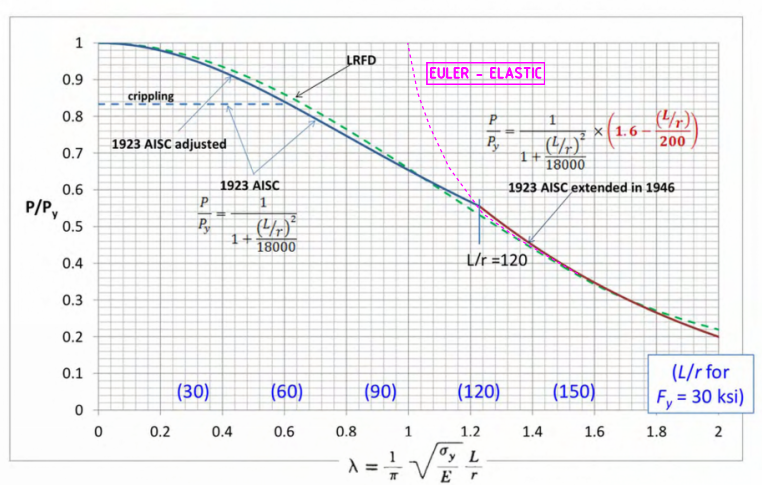So as I am calculating the compression load (design-LRFD)
equation as we all know is øPn = ø Fcr Ag
per the steel manual, AISC the value of the ø which is the resistance factor , is 0.90
but I am looking at 2 design book examples and they use 0.85 ! why ?
they are calculating the fcr differently too. They use Fcr = 0.658 ^ sigma squared FY
but I had learned it a different way. The way I did it, and according to another book I have , they do the whole KL/r check with the 4.71 √E/Fy and then just use fcr = (0.658 ^fy/fe )Fy since KL/r < 4.71√E/Fy . They check the slenderness different too. They are using a whole different equation with sigma. I thought you checked it with the KL/r < 200 ?
is this a code update? I have the 14 edition aisc manual.
I've been trying to figure out all night why but I really can't find it the explanation to why this is.
any help would be appreciated. thanks!
equation as we all know is øPn = ø Fcr Ag
per the steel manual, AISC the value of the ø which is the resistance factor , is 0.90
but I am looking at 2 design book examples and they use 0.85 ! why ?
they are calculating the fcr differently too. They use Fcr = 0.658 ^ sigma squared FY
but I had learned it a different way. The way I did it, and according to another book I have , they do the whole KL/r check with the 4.71 √E/Fy and then just use fcr = (0.658 ^fy/fe )Fy since KL/r < 4.71√E/Fy . They check the slenderness different too. They are using a whole different equation with sigma. I thought you checked it with the KL/r < 200 ?
is this a code update? I have the 14 edition aisc manual.
I've been trying to figure out all night why but I really can't find it the explanation to why this is.
any help would be appreciated. thanks!






![[tongue] [tongue] [tongue]](/data/assets/smilies/tongue.gif) are but that's true. Some concepts never change
are but that's true. Some concepts never change